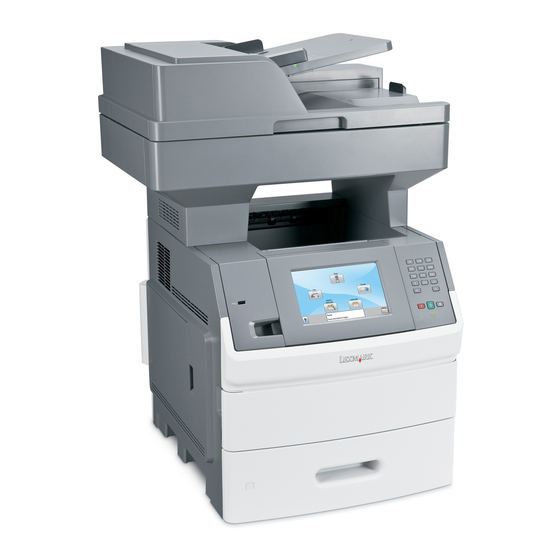
Lexmark X652DE User Manual
Lexmark x652de: user guide
Hide thumbs
Also See for X652DE:
- Service manual (665 pages) ,
- User manual (316 pages) ,
- Manual (170 pages)
Table of Contents
Advertisement
Quick Links
X651de, X652de, X654de,
X656de, X656dte, X658d,
X658de, X658dme, X658dfe,
X658dte, X658dtme, X658dtfe
User's Guide
July 2008
www.lexmark.com
Lexmark and Lexmark with diamond design are trademarks of Lexmark International, Inc., registered in the United States and/or other countries.
All other trademarks are the property of their respective owners.
© 2008 Lexmark International, Inc.
All rights reserved.
740 West New Circle Road
Lexington, Kentucky 40550
Advertisement
Table of Contents









Need help?
Do you have a question about the X652DE and is the answer not in the manual?
Questions and answers